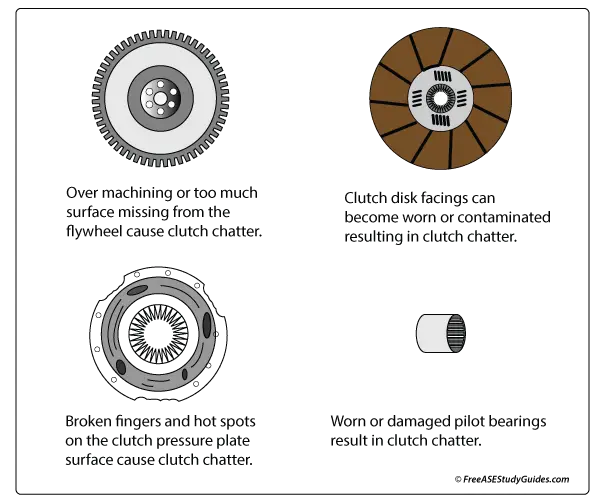Transmission Clutch Diagnosis

Slippage: This is, by far, the most common problem. To diagnose this problem, set the emergency brake, start the engine, and depress the clutch pedal. Place the transmission in high gear, rev the engine to 2500 rpm, and slowly release the pedal. If the engine does not stall, the clutch is slipping. Always check the cables, hydraulics, and motor mounts before replacement because an over-adjusted cable, blocked master cylinder compensation port, or a broken motor mount can cause slippage. As mileage increases, the clutch disc wears, resulting in slippage. An oil-soaked clutch or a weak or warped pressure plate causes clutch slippage.
Chatter: Clutch chatter is an excessive vibration felt just as the pedal is being released and the clutch is beginning to engage. To test for this condition, set the emergency brake, depress the clutch pedal, and rev the engine to about 2000 rpm. Slowly release the pedal so you can feel when the clutch starts to engage. This is the point a clutch will begin to shudder. Glazed or oil-contaminated clutch facings typically cause clutch chatter. The engine and transmission mounts and alignment dowels should be checked for misalignment. This causes a significant shudder and clutch chatter, damaging the disc's torsion springs and clutch facings.

Clutch drag is when the clutch is not releasing completely. This is typically caused by a misadjusted clutch pedal, a warped disc or pressure plate, or a misadjusted linkage. A warped disc, pressure plate, or flywheel will cause pedal pulsation. If you feel the clutch pedal moving up and down while depressing the pedal, look for a warped or misaligned part.